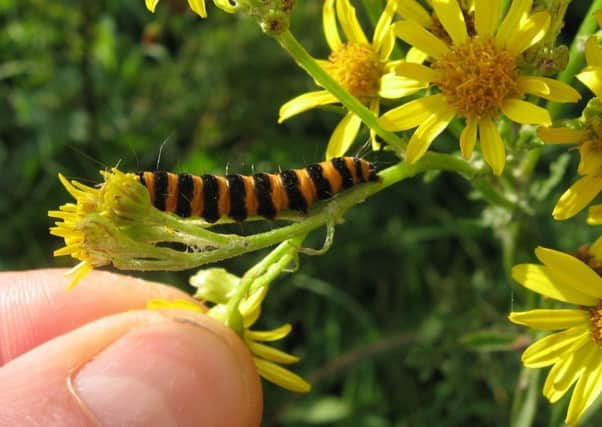Wildlife Column: A call to Watch out for Tiger's Tails


From observations over a few years it seems this noxious plant is spreading. Indeed this year, it is everywhere. Of course the more you look for something like this, once you spot it, the more you find! Nevertheless, I suspect it really is on the up and not being controlled as it once was.
While many folk dislike ragwort because of the obvious problems of toxicity and animal poisoning, this was not always so. In times past, ragwort was highly regarded for herbal medical purposes, including veterinary uses. It was called ‘Staggerwort’ because it could treat staggers in horses, and as ‘Stammerwort’ it alleviated speak impediments in people. I’m not sure of its effects on your liver. Eminent herbalist and writer, Culpepper noted ‘….it cleanses, digests, and discusses. In Sussex we call it Ragweed’.
Advertisement
Hide AdAdvertisement
Hide AdIn eastern England, Fenland poet John Clare wrote ‘Ragwort thou humble flower with tattered leaves, I love to see thee come and litter gold…..The sun tanned sward in splendid hues that burn, So bright and glaring…..’ That neatly describes the other aspect of a splendid flower. Ragwort is deeply associated with English pastoral landscapes, at the heart of the countryside, and yet a flower that carries barely-hidden threats. The colour and smell of ragwort have a clear message, many animals avoiding the living plant and if they try it, find it distasteful. Evolution is fascinating with certain species adapted to eating ragwort and themselves benefitting from protective toxins; insects feeding on ragwort coming with warning signs. The larvae of day-flying cinnabar moths for example, feed exclusively on ragworts, becoming poisonous or distasteful to predators.
Instead of hiding away, ‘Tiger’s Tails’ caterpillars announce their presence with striking black and orange stripes; no camouflage needed, just a warning to ‘beware I taste bad’. However, it seems cinnabar moth numbers have dropped 83 percent, with causes including control of its food.
Should be a bumper year for them, but I’ve seen none so far.